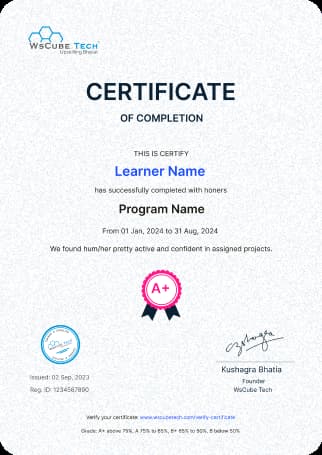Our Full Stack Developer Course offers an extensive curriculum that covers everything you need to become a proficient web developer. We'll equip you with the skills and knowledge to create dynamic, cutting-edge websites and web apps from start to finish.
As a learner of our online Full Stack Development Course, you'll unlock lucrative career opportunities. The demand for Full Stack developers is skyrocketing, and businesses worldwide are actively seeking professionals with the expertise to design and build interactive, user-friendly websites and applications.
At WsCube Tech, we believe in learning by doing. That's why our course includes six months of live, hands-on training to ensure you're job-ready. You won't be alone on this journey. Our experienced mentors are there to guide you at every step, offering invaluable insights and personalized assistance.
You’ll become a master at HTML, CSS, HTML5, CSS3, Bootstrap, Tailwind CSS, ReactJS, JavaScript, MongoDB, NodeJS, and ExpressJS.
You'll work on over 10 real-world projects, building a robust portfolio to showcase your skills to potential employers. Upon completing the full stack development course, you'll receive a recognized certification from WsCube Tech, validating your proficiency as a Full Stack Developer.
Whether you are a fresher or a working professional, we have designed an extensive curriculum to fit different learning goals. This training program will introduce you to the front-end, back-end, and middleware development technologies.
Hence, don't miss out on the opportunity to jumpstart your career in web development with the best online Full Stack Developer Course. Book your demo class now and take the first step towards a successful and prosperous future.





















